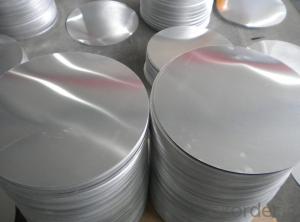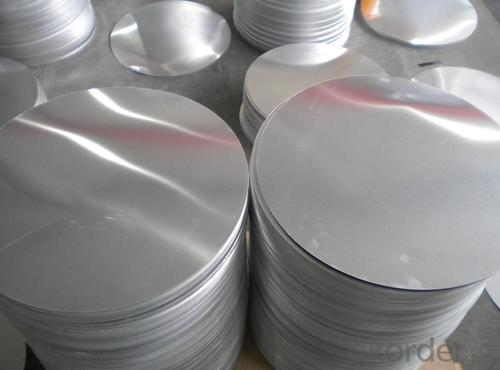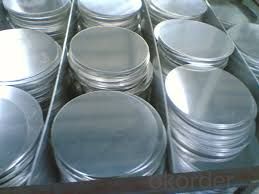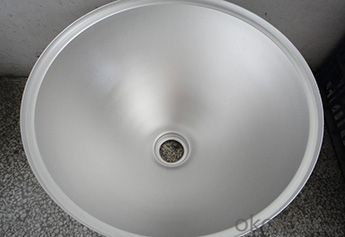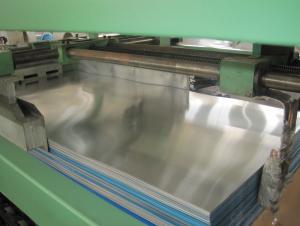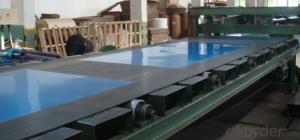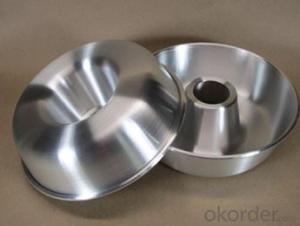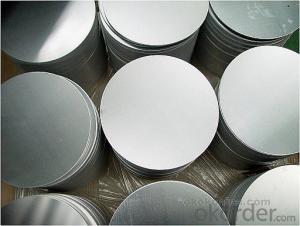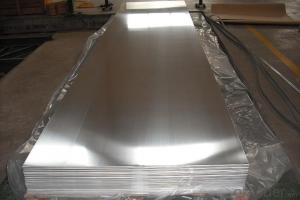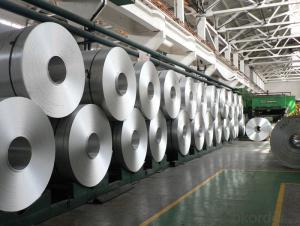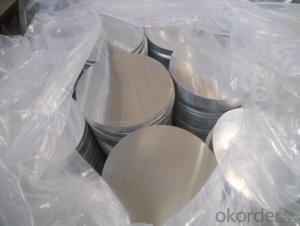Stamped Aluminum Sheets - Hot Rolling Alloy 1050 Aluminum Circle Sheet
- Loading Port:
- Tianjin
- Payment Terms:
- TT OR LC
- Min Order Qty:
- 5 m.t.
- Supply Capability:
- 600 m.t./month
OKorder Service Pledge
OKorder Financial Service
You Might Also Like
Specification
Hot Rolling Alloy 1050 Aluminium Circle Sheet
Professional aluminum product manufacturer
We have our own plant , Laboratory and engineer
Over 100 models can totaly satisfy your request
As powerful and stronger factory, our aluminum quality is very stable and reliable
2 years warranty period
Specifications:
Thickness:0.5mm-6.0mm
Width:100mm-900mm
Surface:Bright & smooth surface, not defects like white rust, oil patch.
Product Information :
Product | Aluminum Circle |
Alloy | 1050 1060 1070 1100 1200 |
Temper | O, H12, H14, H18 and H24... |
Thickness | 0.5mm-6.0mm |
Diameter | 100mm-900mm |
Lead Time | Within 30-45 days after receiving deposit |
Packing | Standard Exporting wooden pallets or based on customer requirement |
Material | Using high-tech machinery utilizing premium grade Aluminium Coil. Customized according to the needs and demands of the clients these can be availed at different technical specifications. |
Surface: | Bright & smooth surface, free from defects like white rust, oil patch, edge damage. |
Application | Aluminium Circles are used in Reflective Sign Boards, Road Furniture, Utensils, Sand witch Bottom, Cooker, Non-Stick etc. |
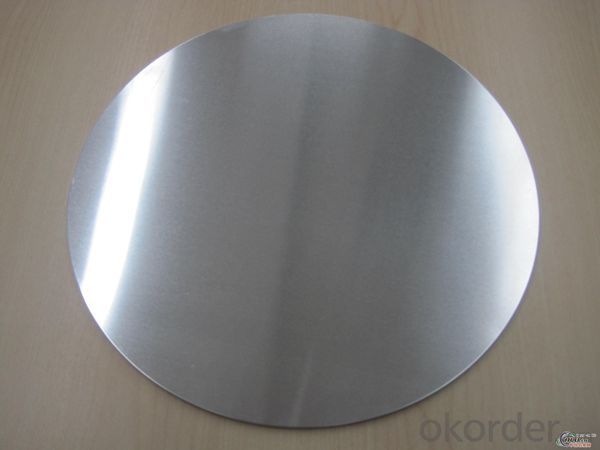
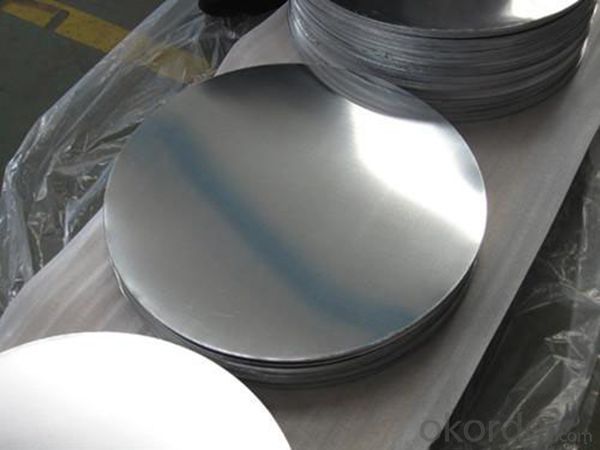
- Q: Is plastic or alumium container more harmful to store food in if it does get to the food while heating.
- i heard plastic is more harmful i read in this article that a chemical found in plastic water bottle was found in this persons blood sample. But it was a small amount where it didnt cause any reactions . when cooking dont use aluminum to cover anything that has tomatoes they cause a bad reaction thats all i know i hope this helps
- Q: What are the common uses of aluminum sheets?
- Aluminum sheets are highly versatile and widely used in various industries due to their excellent properties. Some common uses of aluminum sheets include: 1. Construction: Aluminum sheets are commonly used in the construction industry for roofing, siding, and insulation purposes. They are lightweight, durable, and corrosion-resistant, making them ideal for creating a protective barrier against the elements. 2. Transportation: Aluminum sheets are extensively used in the automotive and aerospace industries. They are used in the manufacturing of car bodies, truck trailers, and aircraft parts due to their high strength-to-weight ratio. The lightweight nature of aluminum sheets helps improve fuel efficiency and reduce overall vehicle weight. 3. Packaging: Aluminum sheets are commonly used for packaging purposes. They are widely used in the food and beverage industry for making cans, foils, and containers. Aluminum sheets provide an effective barrier against moisture, light, and oxygen, ensuring the freshness and safety of the packaged products. 4. Electrical and Electronics: Aluminum sheets find applications in the electrical and electronics industry due to their excellent conductivity. They are used for manufacturing electrical enclosures, heat sinks, and wiring due to their ability to dissipate heat efficiently and protect sensitive electronic components. 5. Marine Industry: Aluminum sheets are highly valued in the marine industry due to their corrosion-resistant properties. They are used for constructing boat hulls, ship fittings, and other marine equipment. Aluminum sheets' ability to withstand harsh marine environments and their lightweight nature make them an attractive choice. 6. Decorative Applications: Aluminum sheets are commonly used in architectural applications for their aesthetic appeal. They can be easily shaped, formed, and colored to create various decorative elements such as wall cladding, ceilings, and decorative panels. Overall, the common uses of aluminum sheets span numerous industries, including construction, transportation, packaging, electrical and electronics, marine, and decorative applications, highlighting the versatility and importance of this material in various sectors.
- Q: Is it possible to manufacture furniture using aluminum sheets?
- <p>Yes, aluminum sheets can be used to make furniture. Aluminum is a lightweight, durable, and corrosion-resistant material, making it suitable for various furniture applications. It is commonly used in outdoor furniture, such as patio sets, as well as in modern indoor furniture designs. Aluminum furniture is easy to maintain, has a sleek appearance, and can be an eco-friendly choice due to its recyclability.</p>
- Q: What are the different methods of surface protection for aluminum sheets?
- Aluminum sheets can be protected in various ways to ensure their longevity and functionality. Anodizing is a widely used technique, involving the creation of a protective oxide layer on the aluminum surface. This is achieved by immersing the sheets in an electrolyte solution and passing an electric current through them. The outcome is a resilient and corrosion-resistant layer that can be further enhanced with different dyes and sealants. Another option is powder coating, which entails applying a dry powder onto the aluminum sheets and then curing it with heat. This results in a robust coating that offers excellent defense against scratches, chemicals, and weathering. Powder coating is available in a wide array of colors and finishes, making it a popular choice for decorative purposes. Chemical conversion coating is yet another alternative, involving the treatment of aluminum sheets with a chemical solution to convert the surface into a protective layer. This coating not only improves corrosion resistance but also provides a suitable base for paint or other coatings. Painting is a commonly utilized method for safeguarding aluminum sheets. Different types of paints, such as epoxy, acrylic, and polyurethane-based coatings, can be applied to the surface. These paints not only shield against corrosion and environmental factors but also offer the opportunity for aesthetic customization. Lastly, laminating is a technique where a protective film is applied to the surface of the aluminum sheets. These films can be made from various materials like PVC, polyester, or polyethylene. Laminating adds an extra layer of protection against scratches, abrasion, and UV radiation. Each method of surface protection for aluminum sheets has its own merits and considerations, which depend on the specific requirements of the application. It is crucial to thoroughly assess the desired level of protection, aesthetic preferences, and budget constraints before selecting the most suitable method.
- Q: Can aluminum sheets be easily bent or shaped?
- Due to its malleability, aluminum sheets are easily bendable and shapeable. This soft and lightweight metal possesses remarkable formability characteristics, making it highly suitable for various shaping processes. Numerous techniques, including press braking, roll forming, and stretch forming, can be used to easily bend, fold, or form aluminum into different shapes. Its malleability allows for the creation of intricate shapes without any cracking or breaking. Moreover, the low melting point of aluminum enables further shaping through processes like hot bending or thermoforming. As a result, aluminum sheets offer exceptional flexibility and ease of shaping, making them a favored choice in industries such as automotive, aerospace, construction, and manufacturing.
- Q: What are the standard tolerances for aluminum sheets?
- The tolerances for aluminum sheets differ based on the specific industry and application. However, there are commonly accepted tolerances for aluminum sheets, such as thickness tolerances, flatness tolerances, and width and length tolerances. Thickness tolerances pertain to the allowable variation in the thickness of an aluminum sheet. The range of these tolerances depends on the grade and thickness of the sheet, and can be from +/- 0.005 inches to +/- 0.010 inches. Flatness tolerances specify the acceptable degree of flatness or deviation from a perfectly flat surface for an aluminum sheet. The range of flatness tolerances varies according to the application's specific requirements, and can be from a few thousandths of an inch to a few hundredths of an inch. Width and length tolerances define the allowable variation in the dimensions of an aluminum sheet. These tolerances can be expressed as +/- inches or as a percentage of the sheet's width or length. Generally, width and length tolerances for aluminum sheets fall within the range of +/- 0.25 to +/- 0.50 inches. It is important to note that these standard tolerances are subject to change and may differ depending on the specific industry, customer requirements, and the manufacturer's capabilities. Therefore, it is advisable to consult the manufacturer or industry-specific standards to determine the exact tolerances for aluminum sheets in a particular application.
- Q: What is the difference between aluminum plate AL1050 and AL1060?
- 1050 and 1060 belong to an aluminum plate, that is, pure aluminum plate, the difference is that the content of aluminum is different. 1050 aluminum content 99.95%, 1060 Aluminum Content 99.60%, material is very close, often can replace the use, the current use is more than 1060 Aluminum plate.Is the aluminum plate with a thickness of more than 0.2mm to 500mm, 200mm width, length less than 16m aluminum material called aluminum plate or aluminum sheet, aluminum is below 0.2mm, 200mm within the width of the row material or bar (of course, with the progress of the large equipment, the width can be 600mm row material also more). Aluminum sheet refers to the rectangular plate made of aluminium ingot rolled and divided into pure aluminum plate, alloy aluminum plate, thin aluminum plate, middle thick aluminum plate and pattern aluminum plate.
- Q: after putting aluminum sheet into the area between magnet and iron products, could magnet attract iron again?
- magnet can attract iron if the aluminum sheet isn't too thick. Because aluminum can't cut off magnetic line of force, unless aluminum sheet's thickness surpass the range of magnetic attraction.
- Q: Are aluminum sheets resistant to saltwater corrosion?
- Yes, aluminum sheets are generally resistant to saltwater corrosion. Aluminum has a natural ability to form a protective oxide layer when exposed to air or water, including saltwater. This oxide layer acts as a barrier, preventing further corrosion and protecting the underlying metal. Additionally, aluminum is lightweight and durable, making it a popular choice for various marine applications such as boats, shipbuilding, and offshore structures. However, it is important to note that the resistance to saltwater corrosion can vary depending on the specific alloy and surface treatment of the aluminum sheets. Therefore, proper selection of the appropriate alloy and protective coatings can further enhance the corrosion resistance of aluminum sheets in saltwater environments.
- Q: I just bought a cheap brand of pop tarts. One of the listed ingredients under Leavening is, sodium aluminum. I don't think Wal-Mart will take back the box, so should I just throw the whole box of 16, away. Or is the proportion of aluminum in the product so minute, that it will not make a difference to my health? Thanks.
- It's actually Sodium Aluminum Phosphate. It's used as a preservative in a lot of food actually. It's not exactly good for you, but it's really no more harmful than any other preservative. So basically, it's unhealthy, but you're not gonna die from eating them. EDIT: Yes I realize that Aluminum has been linked to Alzheimer's disease, but this isn't Aluminum. Aluminum is an element. This is Sodium Aluminum Phosphate. A completely different substance. When an element bonds with another element (or two) often its properties completely change. I think you'd be surprised to learn that Sodium by itself, is not only horribly volatile (it will explode in water) and will kill you if you ingested it. Iodine is also poisonous in fairly moderate doses. But when the two are bonded together (sodium iodide) it becomes an essential nutrient to the body.
Send your message to us
Stamped Aluminum Sheets - Hot Rolling Alloy 1050 Aluminum Circle Sheet
- Loading Port:
- Tianjin
- Payment Terms:
- TT OR LC
- Min Order Qty:
- 5 m.t.
- Supply Capability:
- 600 m.t./month
OKorder Service Pledge
OKorder Financial Service
Similar products
Hot products
Hot Searches
Related keywords
